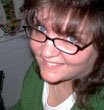Last week we talked about what comes first, character or plot? There's no hard rule for this. Each author does what is best for him or her. But we all have to agree we need strong, interesting characters the reader will care about in some way. They need to be memorable. The reader needs to either root for them or want to see them DIE!! :)
What makes a strong character? And remember, they don't have to be likeable, just memorable. Here are a couple of examples:
Frodo Baggins (The Lord of the Rings) - why do we love Frodo? He has a terrible responsibility thrust on him, but he takes it on with grace and humility. No, he's not perfect and he needs help, but he gives himself to save his world.
Scarlett O'Hara (from Gone With The Wind) - she is a protagonist who is totally self-absorbed, selfish and snarky. But she's memorable. She's strong. She does what she has to to survive. We can admire this without liking her.
So, how do you go about developing your characters, especially main characters? How do you keep control over secondary characters so they don't take over?
Don't Plant Trees!
11 years ago







Sometimes, I've found, secondary characters that just keep popping up again and again turn out not to be secondary at all, but central to the plot in a way you hadn't realized at first. So while it's important not to let the extras start running the show, keep in mind that there may be more going on than maybe you thought at first. That's how it happened with a character in my fantasy novel-in-progress; he was only supposed to be in one scene with only one line. In the next chapter, however, he came back. And again. Next thing I know, a pivotal point of the story hinges on him!
ReplyDeleteI'm not saying that this is or should be the case every time, but if you explore the possibilities, you may find that your over-ambitious secondary character opens a door to plot-twists and ideas you never would have thought of otherwise.
For some reason I find it easier to create memorable villains. I've heard other writers say the same thing. Another thing I try to focus on is who is driving the plot. We want character-driven plots, otherwise our characters become victims. The best stories have the protagonist and antagonist driving the plot in different directions, thus the conflict. That sounds obvious, but when you're enmeshed in writing a scene, it's easy to forget those macro-level issues. I suspect the more characters fight to drive the plot in their direction, the more engaged the reader will become with those characters and the more memorable will be the experience.
ReplyDeleteI don't know. It's like being possessed by aliens. They're just there.
ReplyDeleteI really don't know.
I'm with Jeff. I have waaaay more fun with the villain than I do the main character. There's something about not holding back, isn't there?
ReplyDeleteBut the main character is who we want our readers to care about. I've heard it said to put our characters up in a tree and throw rocks at them. We need to create a situation right from the beginning that makes the reader care and want to see them overcome.
One of the things I learned at the Highlights workshop was to get deeper into Akeela's skin. I needed to show more of what she was thinking and feeling. I needed her to react to what was going on around her. To do that, I needed to revisit some old pain and dig up those emotions. It was hard. But Akeela is ALIVE now. She's more real. More human. She's a match for my witch.
Another way is to interview your characters. Take them out to lunch and talk with them. Christine, that might work for you. HA!!
You can also do some journaling in their voice.
The more time we spend in their heads, the more natural they will appear on the page. Don't be afraid to go as far as you need to. You can always pull back. But a flat character is a flat character. And no one cares about them.
People have told me that they like one of my protagonists because he's quirky and cares for his friends. My villain of the story, on the other hand, gave my sister nightmares; no joke :/
ReplyDeleteIt's becoming easier for me to create likable heroes, but harder to make unlikable villains. :P I guess I'll have to work on that.
I hear you, Danielle. We'll get to creating villains next week. We've talked about it before, but I'd like to take a deeper look.
ReplyDeleteI LOVE developing my characters!! I'm very much a people-person anyway, so getting to develop characters and make them seem alive is a lot of fun.
ReplyDeleteUsually, I start out with what I call a "character sketch"--basically a list of questions about the characters. What does he look like, how does he act, what drives him, etc. The tip I've found the most helpful is from Brandilyn Collins: plotting out what drives a character in Desire, how he's Distanced from the Desire, and how the Desire seems to be taken from him in Denial and Devastation.
When I'm finished with the sketch, I usually "interview" the character--the part where everyone who isn't an author thinks I'm a schizophrenic! :0)
hi Heather - thanks for your post. I love Brandilyn Collins and have sat under her teaching.
ReplyDeleteMy mentor, Nancy Rue, has given me similar exercises for developing characters and it really helps. Even if the information you find out is not used in the story, the more you know about your characters, the more alive they are.
I hope you'll continue to take part in our discussions!